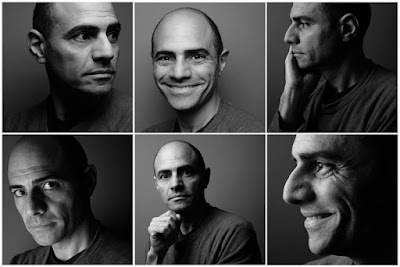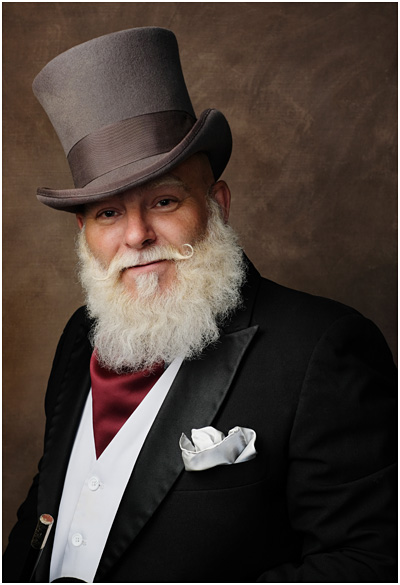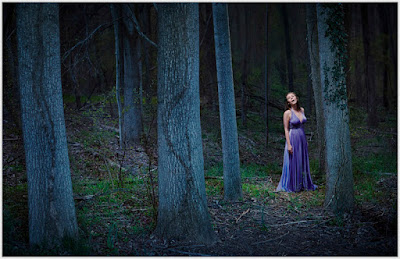A Baker's Dozen: 13 Key Ideas

Thirteen years ago this month, Strobist.com launched with a cutting edge design (heh) and a novel mission (at the time) to be a free source of education for small flash lighting techniques.
Today, a triskaideka-appropriate post: thirteen of the most important principles I have learned related to lighting.
1. Get Your Light Off of the Camera

The central idea of this site: The difference between lighting angle and camera viewpoint is what defines and shapes the three-dimensionality of your subject. That's why this concept is the very first thing we walk you through after you have received your first small-flash lighting kit.
2. Balance Your Light

Ambient light is always your first light. So when using a flash, remember that you already have two light sources. Here's how to get them to play together nicely.
3. Glasses are Not a Problem

Most people make this harder than it needs to be. Reflections of your light in glasses are easily solved by moving either the light or the angle of the glasses relative to the camera. Usually, the latter is far less disruptive and easier to accomplish.
4. Use the Edge of Your Light

The moment when a person is emerging into a new zone of illumination creates a fleeting glimpse of interesting light. By using the edges of your light source, you can extend that moment over an entire shoot.
5. Shooting at Sunset? Use Manual Flash + Automatic Camera

In an environment when the ambient light level is not constant, using manual flash combined with a camera set on aperture priority is often the best approach. Even better, it is also super-quick and easy.
6. One Light for Shape, Another for Detail

Using your first light to define shadow legibility allows your camera to see more like your eye sees. It also gives you more leeway in how you can use your key light.
7. You Can Overpower the Sun with Speedlights

Under-equipped for lights in daylight? No worries, you absolutely can overpower the sun. Here's a technique that works for either individual or group shots.
8. Light Has Depth of Field

How far your light will effectively travel is an important factor in how your subject will look. Fortunately, that rate of falloff is very easy to control.
9. White Light is a Lie

"Daylight white balance" is an arbitrary reference point that tethers you to a lighting reality that does not often exist. The white light your ungelled flash emits is often the least convincing color you can use.
10. Light Can Evoke a Sense of Place

Continuing the thought of "white light" from above, it follows that you can use color in your lighting to create a mood, a place, or a time of day.
11. White Balance is a Continuum

Your eye floats effortlessly along the continuum between standard white balance reference points. Your camera should, too.
12. Photography is a Spendable Asset

Good lighting makes your photos look more professional. And yes, you can use that photography to make money. But you can also spend photography, just as if it were money.
Increasingly, I am learning to think of photography not as just service-for-hire, but as a catalyst that can be introduced into an existing system to unlock value.
We have only just begun to touch on this as a sidebar in the Lighting Cookbook. But we'll be exploring this much more as we continue.
13. Light Your Home Like a Photographer

Every time we remodel a room in our house, I probably spend more time thinking about light that anything else. That's because thoughtful lighting cheaply and effectively defines your living space.
With a little thought, you can light your room like you're lighting a scene. You can even use small pieces of gel to tweak the color balance of a light bulb.
__________
When Did Strobist Actually Start?
Fun fact: I don't think there is actual start date, which is why I have never really considered any date as the site's anniversary.
In March 2006 I was home sick with a pretty nasty bug, and was bored silly. So I started writing down and posting what would become the first half dozen or so posts in the original Lighting 101. By the end of March, there were sixteen posts on the site, a mix of L101s and On Assignments.
I didn't tell anyone that Strobist existed until early April, and then only after backdating the first post to be in February 2006. I figured three months of archives would look more legit.
Two thousand posts—and a quarter billion page views—later, here we are. Thanks to all of you for 13 great years. It's been especially wonderful getting to know so many other photographers around the world through this website.
FROM: Strobist Lighting Cookbook
__________
New to Strobist? Start here | Or jump right to Lighting 101
My new book: The Traveling Photograher's Manifesto
Permalink
<< Home